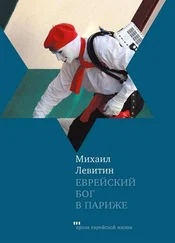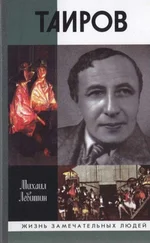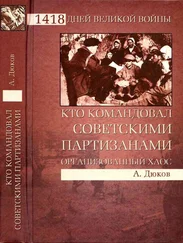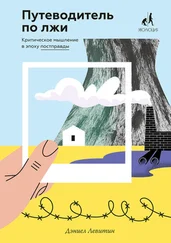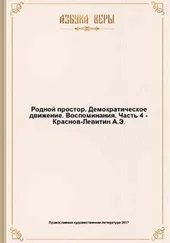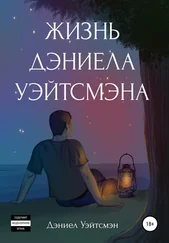University of Michigan Health System. (2013). Coronary artery bypass grafting(CABG). По данным сайта http://www.med.umich.edu/cardiacsurgery/patient/adult/adultcandt/cabg.shtml.
Murphy, M. L., Hultgren, H. N., Detre, K., Thomsen, J., & Takaro, T. (1977).Treatment of chronic stable angina: A preliminary report of survival data of the randomized Veterans Administration Cooperative Study. New England Journal of Medicine, 297(12), 621–627.
Jones, D. S. (2012). Broken hearts: The tangled history of cardiac care. Baltimore, MD: The Johns Hopkins University Press.
Park, A. (2013, March-April). A cardiac conundrum: How gaps in medicalknowledge affect matters of the heart. Harvard Magazine, 25–29.
Ellis, S. G., Mooney, M. R., George, B. S., Da Silva, E. E., Talley, J. D., Flanagan, W. H., & Topol, E. J. (1992). Randomized trial of late elective angioplasty versus conservative management for patients with residual stenoses after thrombolytic treatment of myocardial infarction. Treatment of Post-Thrombolytic Stenoses (TOPS) Study Group. Circulation, 86(5), 1400–1406.
Hueb, W., Lopes, N. H., Gersh, B. J., Soares, P., Machado, L. A., Jatene, F. B. … Ramires, J. A. (2007). Five-year follow-up of the Medicine, Angioplasty, or Surgery Study (MASS II): A randomized controlled clinical trial of 3 therapeutic strategies for multivessel coronary artery disease. Circulation, 115(9), 1082–1089.
Michels, K. B., & Yusuf, S. (1995). Does PTCA in acute myocardial infarction affect mortality and reinfarction rates? A quantitative overview (meta-analysis) of the randomized clinical trials. Circulation, 91(2), 476–485.
Jones, D. S. (2012). Broken hearts: The tangled history of cardiac care. Baltimore, MD: The Johns Hopkins University Press.
Engelmann, J. B., Capra, C. M., Noussair, C., & Berns, G. S. (2009). Expert financial advice neurobiologically “offloads” financial decision-making under risk. PLoS One, 4(3), e4957.
Hertz, N. (2013, October 20). Why we make bad decisions. The New York Times, p. SR6.
Здесь я довольно свободно цитировал предыдущие издания. Levitin, D. J. (2011, October 9). Heal thyself. Review of Your medical mind: How to decide what is right for you, by J. Groopman & P. Hartzband. The New York Times Sunday Book Review, p. BR28.
Howlader, N., Noone, A. M., Krapcho, M., Neyman, N., Aminou, R., Waldron, W. …Cronin, K. A. (Eds.). SEER Cancer Statistics Review, 1975–2009 (Vintage 2009 Populations). Bethesda, MD: National Cancer Institute, based on November 2011 SEER data submission. По данным сайта http://seer.cancer.gov/archive/csr/1975_2009_pops09.
American Cancer Society (2013). What are the key statistics about prostate cancer? По данным сайта http://www.cancer.org.
National Cancer Institute (2013). Prostate cancer treatment (PDQ ®): Treatmentoption overview. По данным сайта http://www.cancer.gov.
Scholz, M., & Blum, R. (2010). Invasion of the prostate snatchers: No more unnecessary biopsies, radical treatment or loss of sexual potency. New York, NY: Other Press, pp. 20–21.
Groopman, J., & Hartzband, P. (2011). Your medical mind: How to decide whatis right for you. New York, NY: Penguin Press, pp. 246–247; а также Hessels, D., Verhaegh, G. W., Schalken, J. A., & Witjes, J. A. (2004). Applicability of biomarkers in the early diagnosis of prostate cancer. Expert Review of Molecular Diagnostics, 4(4), 513–526.
Hugosson, J., Stranne, J., & Carlsson, S. V. (2011). Radical retropubic prostatectomy: A review of outcomes and side-effects. Acta Oncologica, 50(Supplement 1), 92–97.
National Cancer Institute (2014). Stage I prostate cancer treatment. По данным сайта http://www.cancer.gov.
Prostate Doctor (2011, June 4). Shortening of the penis after prostatectomy: Yes, it really happens [Web log message]. По данным сайта http://myprostatedoc.blogspot.com.
Talcott, J. A., Rieker, P., Clark, J. A., Propert, K. J., Weeks, J. C., Beard, C. J. … Kantoff, P. W. (1998). Patient-reported symptoms after primary therapy for early prostate cancer: Results of a prospective cohort study. Journal of Clinical Oncology, 16(1), 275–283, p. 275.
Wilt, T. J., MacDonald R., Rutks, I., Shamliyan, T. A., Taylor, B. C., & Kane, R. L. (2008). Systematic review: Comparative effectiveness and harms of treatments for clinically localized prostate cancer. Annals of Internal Medicine, 148(6), 435–448.
Schröder, F. H., Hugosson, J., Roobol, M. J., Tammela, T., Ciatto, S., Nelen, V. …Auvinen, A. (2009). Screening and prostate cancer mortality in a randomized European study. New England Journal of Medicine, 360(13), 1320–1328.
Kao, T. C., Cruess, D. F., Garner, D., Foley, J., Seay, T., Friedrichs, P. … Moul, J. W. (2000). Multicenter patient self-reporting questionnaire on impotence, incontinence and stricture after radical prostatectomy. The Journal of Urology, 163(3), 858–864.
Bates, T. S., Wright, M. P., & Gillatt, D. A. (1998). Prevalence and impact of incontinence and impotence following total prostatectomy assessed anonymously by the ICS-Male Questionnaire. European Urology 33(2), 165–169.
Parker-Pope, T. (2008, August 27). Regrets after prostate surgery. The NewYork Times.
Цитата из Pollock, A. (2013, May 8). New test improves assessment of prostatecancer risk, study says. The New York Times, p. B3.
Kenet, B., в личной беседе, 30 января 2014 года, New York.
Science Daily Health Behavior News Service. (2012). Exercise can extend yourlife by as much as five years. По данным сайта www.sciencedaily.com/releases/2012/12/121211082810.htm.
Давайте рассмотрим статистику среднего количества часов в неделю, которые люди тратят на просмотр телевизора. Если взять небольшой многоквартирный дом, четверо могут смотреть по часу, а один – по десять часов. Чтобы вычислить среднее количество, мы берем общее количество часов в неделю (1 + 1 + 1 + 1 + 10 = 14), делим на количество человек (14/5) и получаем 2,8. Но никто в доме не смотрит телевизор по 2,8 часа в неделю, это среднее значение.
Я использую термин «среднее» в качестве статистического понятия «середины» (математического ожидания). Есть еще два способа измерения среднего значения: это значение выборки и величина наибольшей повторяемости, и они также называются средними. Среднее значение выборки (медиана) – это промежуточная точка, число, в котором половина данных находится выше, а половина – ниже. Если мы рассмотрим недельный доход людей, живущих в этом же доме, и их заработок 500 долларов, 500 долларов, 600 долларов, 700 долларов, 800 долларов, то среднее значение выборки – 600 долларов: половина значений выше, половина ниже. (Принято считать, что, когда у вас есть множество значений количества часов просмотра телевизора в неделю, вы все равно считаете до середины списка, и это число становится медианой; в примере с телевизором медиана равна 1.) Другой мерой, которую также называют средним значением, будет величина наибольшей повторяемости, значение, которое встречается чаще всего. В нашем примере величина наибольшей повторяемости также равна 1. В примере с недельным доходом это 500 долларов. Обратите внимание, что среднее, медиана и величина наибольшей повторяемости могут быть разными. У них несхожие функции. Примеры того, когда каждая из них играет какую-то роль, есть в Wheelan, C. (2013). Naked statistics: Stripping the dread from the data. New York, NY: W.W. Norton & Company.
Читать дальше
Конец ознакомительного отрывка
Купить книгу

![Дэниел Левитин - Путеводитель по лжи [Критическое мышление в эпоху постправды]](/books/32822/deniel-levitin-putevoditel-po-lzhi-kriticheskoe-my-thumb.webp)
